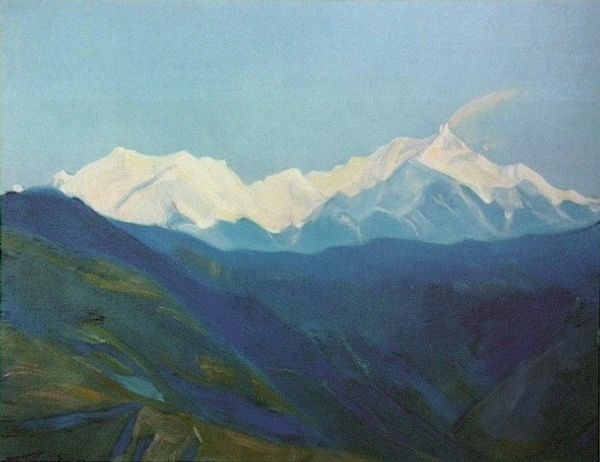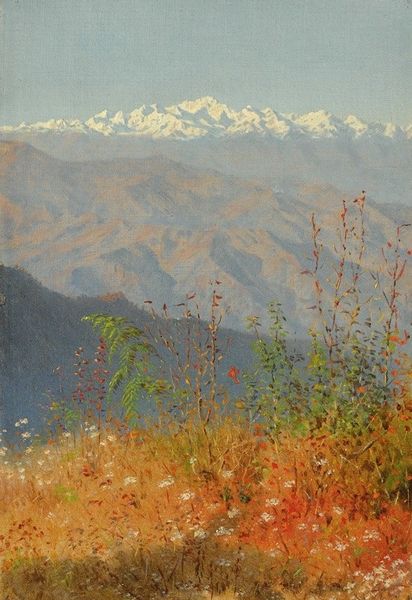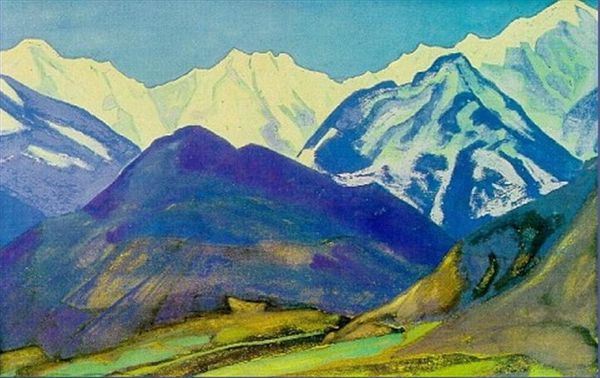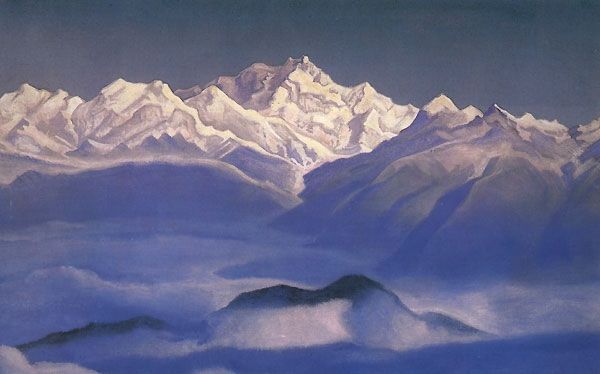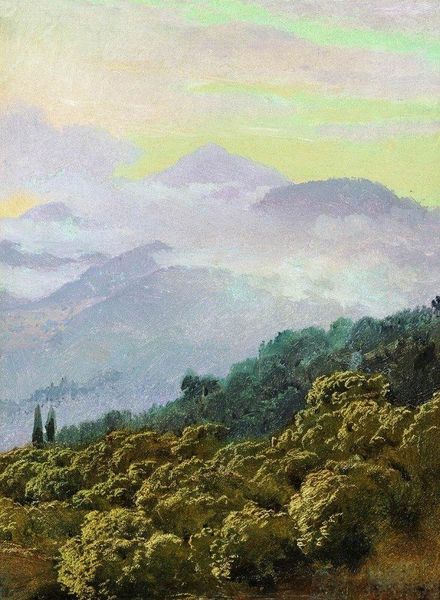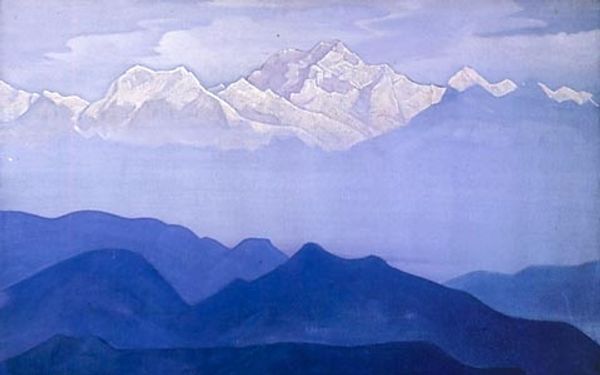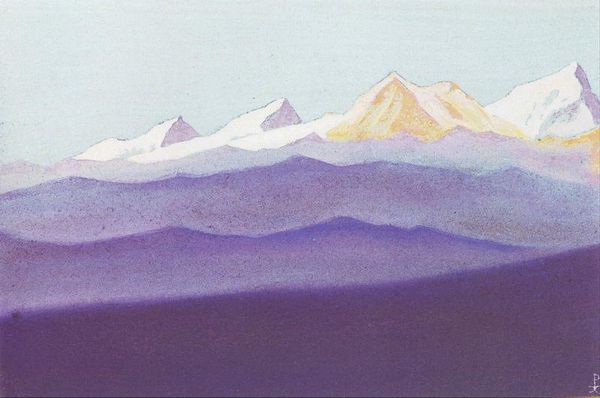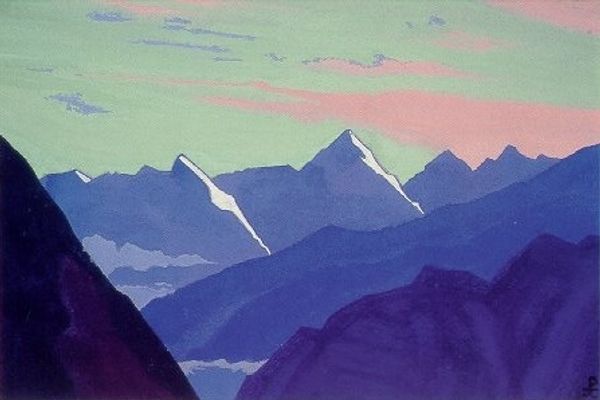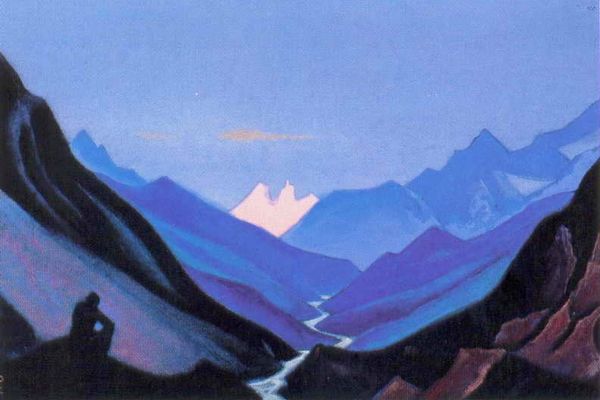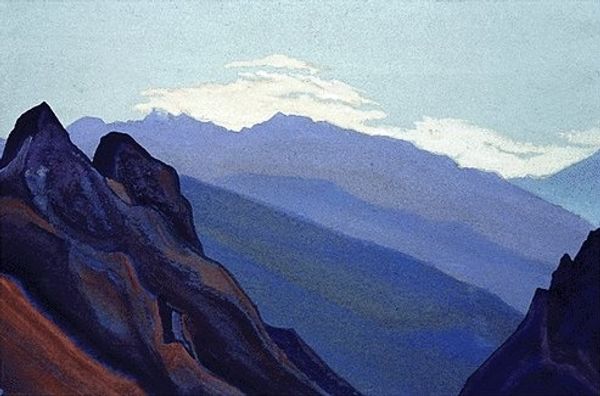
Copyright: Public domain
Editor: This is Vasily Vereshchagin’s "Himalayas in the Evening," an oil painting from 1875. I’m immediately struck by how the different planes of color create depth, that almost feels like looking through a very particular lens. What’s your take on this piece? Curator: Observe how Vereshchagin employs a monochromatic palette, primarily variations of blue, to construct the mountainous landscape. Consider the strategic layering of these hues. What effect does this layering have on the viewer’s perception of depth and distance within the canvas? Editor: Well, the lighter blues definitely suggest distance, making the snow-capped peaks seem almost ethereal. But it also makes the eye travel upward, from the dark foreground. Curator: Precisely. Note also the brushstrokes. In the foreground, they appear more agitated, lending texture to the vegetation, while in the distant peaks, the strokes soften, contributing to the atmospheric perspective. Do you perceive a deliberate contrast established between these elements? Editor: Yes, the difference in brushwork adds to that feeling of vastness and, dare I say, inaccessibility of the Himalayas. It also creates a stark contrast between the serene distance and the earthy, wild foreground. Is the artist inviting some meditation? Curator: Perhaps. And consider the near absence of a human figure. Its absence is indicative. It invites consideration. What statement, regarding man's place in the natural world, might Vereshchagin be making? Editor: It’s fascinating to consider how much this painting relies on these artistic choices, less so on the cultural or social contexts, to communicate its power. Curator: Indeed, by focusing on the formal elements, we can begin to decode the symbolic structure within the painting and approach it from a variety of critical and philosophical viewpoints. It’s always enlightening to see the intrinsic relationships coming together as more than just the sum of its components.
Comments
No comments
Be the first to comment and join the conversation on the ultimate creative platform.
